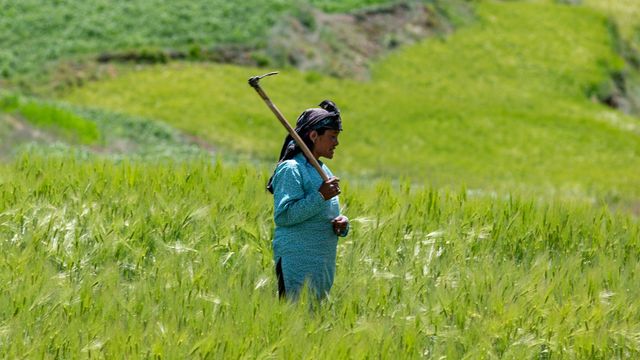Our Terms & Conditions | Our Privacy Policy
Coal Emissions Reduce India’s Wheat and Rice Yields
Crop damage concentrated in key regions and seasons
For the new study, the authors estimated rice and wheat crop losses linked to emissions of nitrogen dioxide, or NO2, from coal power stations. They used a statistical model that combines daily records of wind direction and electricity generation at 144 power stations in India and satellite-measured nitrogen dioxide levels over cropland.
The authors found coal power plants affected NO2 concentrations above cropland up to 100 kilometers, or roughly 62 miles, away. Eliminating coal emissions from all farmland within this range during key growing seasons (January-February and September-October) could boost the value of rice output across India by approximately $420 million per year and of wheat output by $400 million per year, according to the study.
“This study underscores the importance of looking at environmental issues under a systems lens,” said study co-author Inês Azevedo, a professor of energy science and engineering in the Doerr School of Sustainability. “Any policy focused on reducing emissions from coal power plants in India will be ignoring a crucial part of the problem if it does not consider the damages from air pollution to agriculture.”
In some states with high levels of coal-fired electricity generation, such as Chhattisgarh, coal emissions account for as much as 13-19% of the region’s nitrogen dioxide pollution, depending on the season. Elsewhere, like Uttar Pradesh, coal emissions contribute only about 3-5% of NO2 pollution. Other common sources of the gas, which results from burning fossil fuels, include vehicle exhaust and industry.
Broad benefits from emission cuts
The analysis reveals that the value of lost crop output is almost always lower than the mortality damage caused by any given coal power station. But the intensity of crop damage per gigawatt-hour of electricity generated can often be higher. At 58 of the 144 power stations studied, rice damage per gigawatt-hour exceeded mortality damage. Wheat damage per gigawatt-hour exceeded mortality damage at 35 power stations.
“It’s rare to find a single thing – in this case, reducing coal emissions – that would help agriculture so quickly and so much,” said Lobell, who is also the Gloria and Richard Kushel Director of Stanford’s Center on Food Security and the Environment.
The researchers found little overlap among the stations associated with the largest crop losses and those associated with the highest mortality. This means benefits from possible emission reductions in the future could be more significant and widely distributed than previously understood. According to the authors, the results highlight “the importance of considering crop losses alongside health impacts when regulating coal electricity emissions in India.”
“Well-targeted policies to cut emissions could deliver thousands of dollars of increased crop output for each clean gigawatt-hour, in addition to all the climate and human health benefits,” said Singh.
Reference: Singh K, Lobell DB, Azevedo IML. Quantifying the impact of air pollution from coal-fired electricity generation on crop productivity in India. Proc Natl Acad Sci USA. 2025;122(6):e2421679122. doi: 10.1073/pnas.2421679122
This article has been republished from the following materials. Note: material may have been edited for length and content. For further information, please contact the cited source. Our press release publishing policy can be accessed here.
Images are for reference only.Images and contents gathered automatic from google or 3rd party sources.All rights on the images and contents are with their legal original owners.



Comments are closed.